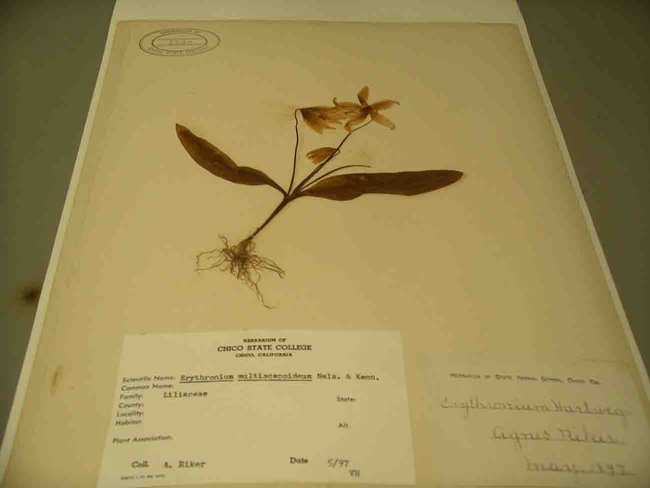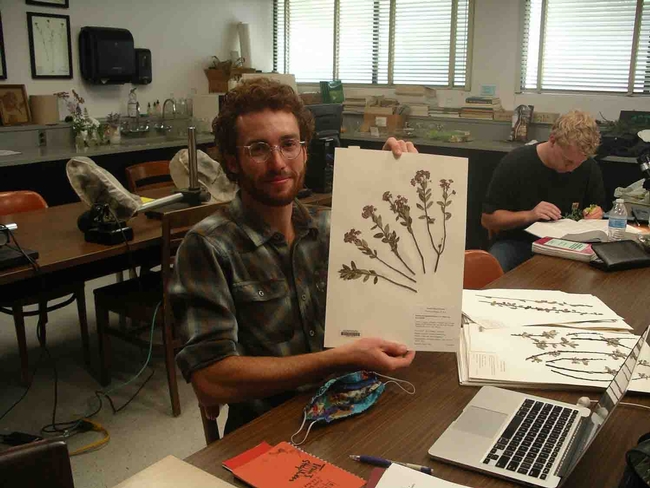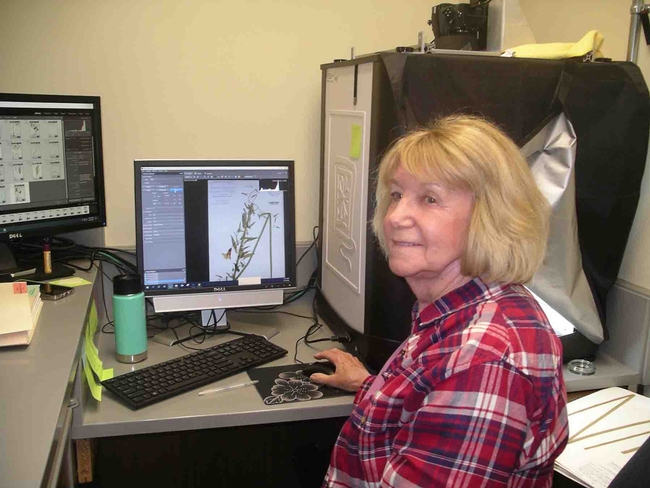Imagine a library with thousands of books lining the shelves. Then imagine that instead of books, those shelves are filled with dried and mounted plant specimens. Such a systematic collection of dried plants is called an herbarium. The Herbarium at Chico State was founded in the early 1960's by Chico State Professor Kingsley Stern with specimens donated by Professor Vesta Holt; the collection now holds more than 124,000 specimens. The Herbarium's primary emphasis is the rich botanical diversity of the north state, but there are also specimens from southern California, other states, and even other countries.

The Herbarium's most prolific collector is Lowell Ahart, a retired rancher from Honcutt, who has been collecting since college and who has donated more than 22,000 specimens. In recognition of his botanical and monetary support, on June 7, 2022 (this coming Tuesday), the formal name of the collection will change from the Chico State Herbarium to the Ahart Herbarium.

All it takes is access to the internet to be able to retrieve information about any of the more than 2.2 million specimens represented in CCH2 without having to visit the herbarium where a particular specimen is kept. You can access the CCH2 collection here. But sometimes an in-person visit to an herbarium is necessary. The Herbarium at Chico State has hosted researchers from a variety of institutions, including the Smithsonian Institution, the University of Washington, and even a Japanese university.

In 2019 the Herbarium began a project to digitize all of the angiosperms (flowering plants) in the collection as part of a California-wide collaboration to understand the effects of climate change on plant flowering times. The digitized photos are linked to the specimens in CCH2 so that researchers can see a high resolution image of each plant and whether or not it is in bud, in flower, or in fruit. This allows researchers to track changes in flowering and fruiting times from the past until now. Herbarium Assistant Nancy Groshong has done the bulk of the digitizing and this project is nearing completion.
Traditionally herbaria were a resource for the identification and documentation of plants, but their nature has changed in the last 50 years. The information on collection labels that is visible in digitized photos, and the DNA contained by the specimen itself are rich sources of scientific data about geographic range, evolution of new species, patterns of diversity, introduction and spread of invasive species, and global climate change. Past and current conditions can be compared with an eye to planning for future conditions. Therefore, in addition to botanists and other researchers, conservation and land managers find the Herbarium a valuable resource.
Biological sciences professor Colleen Hatfield is director of the Herbarium at Chico State; Lawrence Janeway is part-time curator of the collection. Volunteers and student interns do the mounting, databasing, and filing. A group of supporters called Friends of the Herbarium (FOH) raises money to pay for equipment and the curator's salary and to build an endowment for the Herbarium.

FOH maintains a regular program of events and workshops that are open to the public. An online presentation under the heading “All Things Botanically Related” is shown on the third Thursday of the month. Prior presentations can be accessed at their Events & Workshops webpage. A workshop on Introduction to Keying Manzanitas led by manzanita experts Tom Parker and Mike Vasey will be offered on June 4, 2022. Other workshops, including Butterflies of Butte County and Native Bees as Pollinators, are in the planning stage. See the FOH website for more information.
Located in Holt Hall room 129, the Chico State Herbarium is open to the public by appointment every Friday from 9-5. There are dissecting microscopes and an extensive reference library available for use. Volunteers can help identify plants, from the latest weed invading one's garden to the wildflowers in a favorite photo. For further information see the Herbarium website.
UC Master Gardeners of Butte County are part of the University of California Cooperative Extension (UCCE) system. To learn more about us and our upcoming events, and for help with gardening in our area, visit our website. If you have a gardening question or problem, email the Hotline at mgbutte@ucanr.edu (preferred) or call (530) 538-7201.